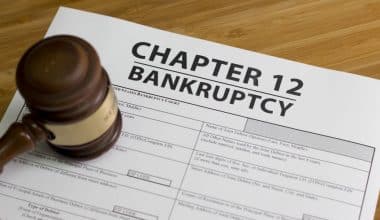The term “preservation” refers to the process of safeguarding an asset’s monetary value.
Sometimes, but not always, capital preservation strategies are understood to mean preserving the asset’s inflation-adjusted purchasing power. This safeguard ensures that you can use a given sum of money to purchase the same number of goods and services at the end of the holding period.
Only after they meet the first or second condition that the portfolio owner or manager consider earning a genuine, real return on the position. Discover the basics of capital preservation funds and how the investments work.
What Exactly Is Capital Preservation?
Capital preservation refers to the fact that some money piles don’t need to grow in size. If they do, that’s the cherry on top, but that’s not why you’ve set them aside. It is not the reason for their existence.
Instead, these funds have been set aside solely to be available when you need them. You do intend to spend the money at some point. Often, this is required because you are nearing or have already reached retirement age. The funds will be used to pay bills, cover prescriptions, keep the heat on in the winter, and treat yourself to a meal out every now and then. However, among younger investors, the funds are frequently designated for a down payment on a home.
The Process of Capital Preservation
The reason it’s critical to show that a specific pile of cash has a capital preservation strategy is that the act of preservation will severely limit which assets are a suitable place to park your money.
Real-world experience shows that a diversified portfolio of blue-chip stocks kept in a tax-efficient, low-cost manner outperforms all other asset groups. This finding is based on the assumption that you have a long enough time span and that your original purchase price was fair and not overpriced.
Stocks, on the other hand, are not suitable for anyone seeking to preserve wealth. This is due to the fact that the valuation of these securities will fluctuate. Similarly, bonds are sometimes considered to be “secure” for preservation purposes. However, if you implement a long bond duration, you can see valuation fluctuations that are as high, if not greater, than those seen in the stock market.
Key Preservation Considerations
Volatility is the most important factor to consider when choosing assets for capital preservation. The amount by which the value of a given security or account fluctuates is referred to as volatility. This sum is calculated as a percentage of the initial cost base.
In the United States, the traditional capital protection options include FDIC-insured checking accounts, savings accounts, money market accounts (not money market funds—those are different), and certificates of deposit (CDs). You can also include very short-term Treasury bills in this category if they park it directly with the US Treasury via a TreasuryDirect account.
In both situations, an investor should be able to keep the nominal value of their cash after deducting any bank fees or expenses.
Real bills tucked under a mattress, in a coffee can buried in the garden, or stored in a safe deposit box are also options, but each comes with its own set of risks.
Savings bonds from the United States can be a good option for an investor with a slightly longer time span and no need for current cash profits.
Choosing Appropriate Assets
New financial securities come into vogue on Wall Street roughly once every generation, and people use them as a cash equivalent for their capital preservation needs. Then, eventually, a recession or other crisis occurs, and it becomes all too clear that protection was an illusion.
This occurred during the Great Recession of 2008 and 2009 with something known as auction-rate securities. People treat these investments as if they were cash in the bank. They weren’t, and some people lost millions of dollars almost immediately because they couldn’t find a buyer for their paper.

The Drawbacks of the Capital Preservation Strategy
Inflation is the most significant disadvantage of using a capital preservation strategy. While fixed-income investments are generally regarded as safe and offer predictable returns, inflation can wipe out those returns. This is due to the fact that the interest rate fixed-income securities pay is typically a nominal interest rate. This means that the rate does not take inflation into account. The real interest rate on a fixed-income investment is the nominal rate minus the rate of inflation. (Britespanbuildings)
So, if you have a treasury note with a nominal interest rate of 3% and inflation rises to 2%, the real interest rate on the T-note will be just 1%. Alternatively, inflation could have reached 5%. Your actual interest rate will be negative 2% in this situation. This essentially means that your investment will lose value.
Since inflation can have a significant effect on the value of your portfolio, we should only see capital preservation as a short-term strategy. As a general rule, if you can’t afford to lose all of your retirement savings, it’s okay to invest in assets that may yield a 0% or even a slightly negative return.
As a general rule, if capital preservation is truly necessary, accepting a 0% rate of return or a slightly negative rate of return after inflation is preferable to risking money you can’t afford to lose.
The Best Capital Preservation Investments
It’s difficult to imagine that there were funds that generated positive returns during the Great Recession that followed the 2007 financial crisis. But there were others. Capital preservation funds, for example, do just what their name implies: they protect the capital—even through economic downturns.
If you’re looking for total annual returns, the capital preservation funds listed below are among the best and have been delivered in every environment over the last decade. Regardless of whether the market is bullish or bearish, it might be wise to stay with a few capital preservation funds that have the bulk of their exposure to investment-grade bonds—just in case.
#1. The Great-West Short Duration Bond (MXSDX)
If you want exposure to investment-grade bonds, consider the Great-West Short Duration Bond (MXSDX), which spends at least 80% of its net assets in the United States. Treasuries, commercial and residential mortgage-backed securities, asset-backed securities, and corporate bonds are all examples of debt securities.
MXSDX has had a cumulative return of 4.11 percent since its launch in August 1995. The cost ratio of 0.60 percent is lower than the 0.81 percent group average, and there is no minimum expenditure. These aren’t stellar figures, but the aim is to stay healthy through turbulent times while gaining a little yield.
#2. The Prudential Short-Term Corporate Bond (PBSMX)
The Prudential Short-Term Corporate Bond (PBSMX) seeks high current income while preserving capital by investing in corporate bonds with varying maturities. The fund’s effective lifespan is usually less than three years.
Since its inception in September 1989, the fund has returned just under 5%. The cost ratio of 0.75 percent is marginally lower than the group average of 0.81 percent, but it remains high. This is a large fund in comparison to the others on this list. It has net assets of $10 billion and a $1,000 minimum investment. Is it worth the money? You may make a case either way, but there might be better options available.
The BlackRock Allocation Target Shares Series S Portfolio (BRASX) does not have an expense ratio. However, the capital preservation investment success and future prospects are more relevant to consider here.
Since its inception in September 2004, the fund has returned 3.67 percent. Furthermore, there is no minimum commitment, making this a low-risk starter capital preservation fund for cautious investors. But what does the future hold for BRASX? BRASX makes the following capital preservation investments:
- Mortgage-backed securities, both commercial and residential
- Non-U.S. obligations governments and non-governmental organizations
- Domestic and non-U.S. obligations businesses
- Securities that are backed by assets
- Mortgage rights that have been collateralized
- The United States Treasury and government department securities
- Derivatives
- Investments in cash equivalents
- Agreements to repurchase
- Reverse repurchase contracts
- Rolls of money
This will count as a wide range of capital preservation investment vehicles, and investors might try to optimize return on this fund over time. Expect much of the same in terms of potential, which is low capital appreciation–if any–a respectable yield, and relative resiliency to bear market conditions. (For more information, see Top Bear Market Funds to Play the Bear Market.)
What is a Good Capital Preservation Fund?
The 30% stock/70% bond allocation is an ideal capital preservation portfolio. This conservative asset allocation is a straightforward way to invest for income and a modest total return.
What is a Capital Preservation Plan?
Capital preservation is an investment strategy that promotes saving, i.e., preserving capital and avoiding loss of value. The strategy adopts a conservative approach towards investing specifically in “safe” short-term instruments such as savings accounts.
Why is Capital Preservation Important?
Capital Preservation is a term referring to an investment strategy with the main objective of preserving capital and avoiding losses in an investment portfolio. … Low-risk investments are the preferred investment option for Capital Preservation investors, but, as a result, also provide correspondingly lower returns.
What is Capital Preservation Vs Income?
Income generation is for investors who want to produce a growing income distribution while leaving the principal alone. Principal preservation aims to cover the inflation rate—around 2-3% in recent years—with the least amount of risk and volatility
In conclusion
If you want to be relatively resilient to difficult economic conditions while earning a small yield, you can look into the funds listed above. You do not anticipate a large return. After all, this is about capital protection.







1 comment
Wonderful web site. Lots of helpful information here. I’m sending it to several pals ans additionally sharing in delicious. And of course, thanks on your effort!